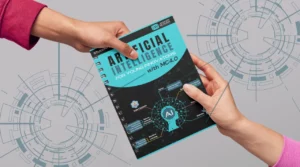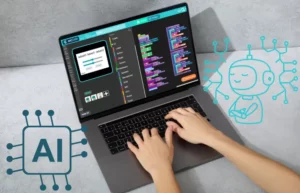In today’s rapidly evolving educational landscape, the integration of technology into teaching strategies has become more essential than ever. Among the various technologies available, AI educational tools stand out for their potential to enhance learning experiences. Let’s delve into why these tools are becoming a must-have in American classrooms.
1. Fostering Personalized Learning Experiences
AI can analyze individual learning patterns, helping to tailor educational experiences that cater to each student’s unique needs. This personalization can lead to improved comprehension and retention. By leveraging adaptive learning technologies, teachers can create a more engaging and effective curriculum that addresses the strengths and weaknesses of each student, ultimately driving better learning outcomes.
Moreover, AI’s ability to continuously adjust learning paths based on real-time performance data ensures that students are both challenged and supported as needed. This dynamic approach empowers learners to progress at their own pace, fostering independence and self-motivation.
2. Enhancing Student Engagement
Interactive AI tools can make learning more engaging, with gamified elements and adaptive learning paths that keep students motivated and interested in the material. These technologies offer a variety of interactive experiences, from virtual reality simulations to digital labs, that stimulate curiosity and enhance understanding.
Implementing AI-driven gamification can transform traditional classroom activities into exciting challenges, encouraging students to delve deeper into their subjects. This level of engagement helps solidify knowledge and boosts students’ desire to participate actively in their learning journey.
3. Streamlining Administrative Tasks
With AI handling repetitive administrative tasks like grading and scheduling, teachers can focus more on the creative aspects of teaching and on their students. Automation tools can manage attendance, process grades, and even create personalized reports, freeing up valuable time for educators.
Additionally, AI’s efficiency in administrative tasks helps reduce human error and ensures that educators have readily available access to important data. This streamlined approach allows teachers to spend more time developing innovative lesson plans and engaging directly with their students.
4. Providing Real-Time Feedback
AI tools can provide students with immediate feedback on their performance, helping them understand areas of improvement and fostering a growth mindset. This instantaneous feedback loop encourages students to reflect on their learning processes and make necessary adjustments to enhance their understanding of the material.
Moreover, real-time feedback aids in continuous assessment, shifting the focus from periodic exams to a more consistent evaluation system. This helps students build confidence and keeps parents and teachers informed about student progress.
5. Supporting Diverse Learning Needs
From language translation to speech recognition, AI tools can support students with different learning needs, ensuring a more inclusive classroom environment. Technologies such as speech-to-text software and language learning apps can break down barriers that might otherwise hinder academic progress.
AI’s potential in addressing accessibility issues is particularly important for including students with disabilities in the learning process, ensuring they receive the same quality education as their peers. By accommodating diverse learning needs, educators can foster an environment where all students can thrive.
6. Improving Data-Driven Insights
AI can analyze educational data to provide insights that can help improve teaching strategies and student outcomes, enabling more informed decision-making by educators. With big data analytics, teachers can identify patterns and trends that would be difficult to discern manually.
These insights allow educators to refine their teaching approaches, focusing on strategies that are proven to enhance student learning. In this way, AI not only supports current educational practices but also drives innovation and development in pedagogy.
7. Facilitating Distance Learning
AI educational tools are instrumental in facilitating effective distance learning, ensuring that students continue their education seamlessly during disruptions. Tools like Virtual Classrooms and Learning Management Systems (LMS) provide platforms for students to access course materials, participate in discussions, and complete assignments remotely.
By incorporating AI, these platforms can offer personalized content and adaptive learning pathways, maintaining engagement and motivation. This flexibility is particularly important in times of uncertainty, as it allows educators and students to remain resilient and adaptable.
8. Encouraging Collaborative Learning
AI tools can connect students and educators across different locations, promoting collaborative learning and sharing of diverse perspectives. Online platforms facilitated by AI offer features like discussion boards, group projects, and peer reviews that enable interactive learning experiences.
Through such platforms, students gain exposure to a variety of viewpoints and expertise, enhancing their understanding of global issues and fostering cultural awareness. Collaborative tools make education a more social experience, encouraging teamwork and communication skills essential for the 21st century.
9. Promoting Critical Thinking Skills
By engaging students in problem-solving and analytical exercises, AI tools can help cultivate critical thinking skills necessary for future success. AI-powered simulations and interactive scenarios present complex challenges that require students to apply their knowledge creatively.
This kind of active learning environment develops students’ ability to think critically, approach problems from various angles, and devise innovative solutions. Encouraging these skills helps prepare students for careers in a rapidly changing technological landscape.
10. Reducing Educator Burnout
By streamlining tasks and providing resources for planning and assessment, AI can reduce the workload on educators, helping them maintain a healthy work-life balance. Administrative burdens, which often contribute to teacher burnout, are alleviated by automation and intelligent scheduling tools.
As a result, educators can dedicate more time to student interaction and professional development, leading to a more fulfilling and sustainable teaching career. This support not only benefits teachers but ultimately contributes to a more effective and nurturing educational environment.
11. Supporting Professional Development
AI can offer educators personalized professional development opportunities, ensuring they stay updated with the latest teaching trends and techniques. AI-driven platforms can recommend relevant content, workshops, and courses tailored to educators’ specific interests and needs.
This targeted approach enhances teachers’ skill sets and enables them to apply innovative practices to their classrooms, fostering an educational culture that embraces continuous learning and improvement. Such advancements ultimately contribute to higher quality education for all students.
12. Enhancing Curriculum Development
AI tools can assist in developing dynamic curriculum content that evolves based on student performance and engagement metrics. With intelligent curriculum design, educators can craft lessons that are both effective and engaging, adjusting content to meet learners’ evolving needs.
This adaptability ensures that educational materials remain relevant and challenging, promoting sustained student interest and progress. AI’s contribution to curriculum development fosters an educational experience that is both innovative and impactful.
13. Ensuring Ethical AI Practices
AI educational tools come with a focus on ethical practices, ensuring data privacy and security, which is paramount in today’s digital age. Educators and institutions must prioritize the implementation of ethical AI frameworks that safeguard student information and promote responsible technology use.
Transparency in AI processes helps build trust among students, parents, and educators, ensuring that AI technologies are used in a manner that benefits all stakeholders. By prioritizing ethics, educational institutions can leverage AI’s potential while maintaining the integrity and safety of their learning environments.
14. Expanding Access to Quality Education
With AI, quality educational resources can reach underserved communities, reducing educational disparities across the nation. Technologies such as cloud-based platforms allow students in remote or economically challenged areas to access the same materials and instructional support as those in more privileged settings.
By providing equitable access, AI empowers learners from all backgrounds to achieve their academic potential, fostering a more inclusive and equitable education system. This broad access to high-quality education promotes societal growth and economic development.
15. Preparing Students for the Future
By integrating AI into the classroom, students become familiar with technologies that will be integral to their future careers, better preparing them for the job market. Understanding AI tools and applications provides students with a competitive advantage, equipping them with essential skills for the digital economy.
Furthermore, exposure to AI-driven learning environments encourages students to think innovatively and adapt to technological advancements. This preparation not only benefits individual career prospects but also contributes to workforce development and the nation’s economic competitiveness.











